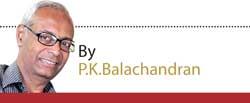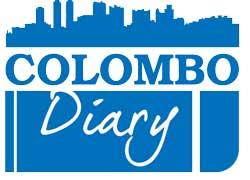06 Aug 2020 - {{hitsCtrl.values.hits}}
 When the media reported that the Sri Lankan Ministry of Tourism and Civil Aviation has issued a newspaper advertisement in Sinhala urging people to share documents, books, and research material on Ravana, the legendary king of Lanka, it was not a surprise for students of Sri Lankan nationalism. Far from being a villain (as portrayed in Valmiki’s Ramayana), Ravana has been celebrated by the majority Sinhalese in Sri Lanka as a cultured and creative icon and a defender of the island against a foreign invader.
When the media reported that the Sri Lankan Ministry of Tourism and Civil Aviation has issued a newspaper advertisement in Sinhala urging people to share documents, books, and research material on Ravana, the legendary king of Lanka, it was not a surprise for students of Sri Lankan nationalism. Far from being a villain (as portrayed in Valmiki’s Ramayana), Ravana has been celebrated by the majority Sinhalese in Sri Lanka as a cultured and creative icon and a defender of the island against a foreign invader.
The advertisement said that the Ministry is conducting in-depth research on “King Ravana and the ancient domination of the aerial routes that is now lost”. Ravana is believed to have manufactured an aircraft called “Dandu Monara” (known as Pushpaka Vimana in India). He had used the aircraft to fly to India and several other places overseas.

Although the research is being given a scientific goal – to find out Ravana’s air routes, it is essentially meant to produce a corpus of literature on how Sri Lanka had a glorious scientific and technological past for which due credit has not been given. This nationalistic project is relevant, especially now, when the island nation needs to be self- confident in the face of internal and external challenges. The vestiges of separatism are still there and there is foreign pressure to sign agreements which dilute national sovereignty. Though the threat on the political and human rights front is less now because of the weakening of the UN and the Western bloc by COVID-19, it could be revived to intimidate it into toeing the West’s line vis-a-vis China. The Ravana cult is meant to tell foreign hegemons that attempts to enforce their will would be met with resistance.

In her paper “Remaking and Trans-creating Ravana in Contemporary Sri Lanka,” Dr. Kanchuka Dharmasiri of the University of Peradeniya and Massachusetts, mentions popular songs, films, plays, television series, social media, and “historical” narratives on Ravana, which according to her, have gained “unprecedented popularity” in 21st. Century Sri Lanka. Tracing the trajectories of the various manifestations of Ravana she reveals the ways in which the Hela/Sinhala/Tamil hero has been reimagined and trans-created during significant socio-political transformations in Sri Lanka since the 1950s.
In an entry on the paper in the Cornell University website, Dr. Dharmasiri says that her intention was to examine the socio-political and economic workings of these retellings and to probe the way in which they render Ravana a hero in both Sinhala and Tamil literary, theatrical and cinematic texts and cultural contexts and examine how ancient and modern myths and performances of Ravana are intertwined with ideologies of nationalism, neoliberalism and power and how the image of Ravana is in a process of continual transformation.
Deborah De Koning of Tilburg University in The Netherlands, in her paper entitled: The Ritualising of the Martial and Benevolent Side of Ravana in Two Annual Rituals at the Sri Devram Maha Viharaya in Pannipitiya, Sri Lanka says: “At the Sri Devram Maha Viharaya, a recently constructed Buddhist complex in Colombo, Ravana has become the object of devotion. In addition to erecting a Ravana statue in a shrine of his own, two annual rituals for Ravana are organised by this temple. In these rituals we can clearly discern the two previously mentioned conceptualizations: the Ravana Perahera (procession) mainly concentrates on Ravana’s martial side by exalting Ravana as warrior king, and in the Maha Ravana Nnanumura Mangalyaya, a ritual which focusses on healing, his benevolent side as a healer is stressed. “
De Koning says that conceptualizations from the broader Ravana discourse are ritualized in iconography, attributes, and sacred substances. The glorification of an ancient civilization are part of increased nationalistic sentiments and an increased assertiveness among the Sinhalese Buddhist majority in post-war Sri Lanka, she observes.
According to Ahubudu, Ravana’s step brother Vibhishana, had invited Rama to invade Lanka because he was wanting to oust Ravana from the kingship of the island and take it over
Originator of the Sinhala nation
In his paper in the Journal of South Asian Studies entitled: “Ravana’s Sri Lanka: Redefining the Sinhala Nation?” Dileepa Witharana of Open University suggests that the Sinhala nation is on the verge of being redefined. He observes that “in comparison to the origin story of the Sinhalese that remained seriously unchallenged till the end of the twentieth century, in which the Sinhalese were considered the descendants of the Aryan prince Vijaya who arrived on the island around 2,500 years ago, this new narrative identifies the Yakkha king Ravana as the originator of the Sinhala nation by going further back into the past.”
In their paper entitle “Sinhala Buddhist Apotheosis and Tamil Responses” in the Journal of South Asian Studies Pathmanesan Sanmugeswaran et al., of the University of Kentucky, “highlight the irony of the recent Buddhist appropriation of Ravana as a signifier of indigeneity and sovereignty, given that he has already been employed in this capacity in the Tamil Hindu context for nearly a century. We note several convergences between the ‘Sinhala Ravana’ phenomenon and its Tamil counter-narrative, including a shared archive of textual material invoked as evidence, the introduction of alleged physical evidence as proof of Ravana’s historicity, and a sympathetic outlook on Ravana’s character, emphasising his qualities as a learned and righteous king.”
Role of Arisen Ahubudu
Historical chronicles like the Mahawamsa, Rajavaliya and Ravanavaliya identify Ravana as a Sinhala king and extol his intellectual, artistic, physical and political prowess. However, the credit for starting the Ravana cult in the modern era goes to the Sinhala cultural and linguistic revivalist the Late Arisen Ahubudu. Ahubudu. He represented the “Hela” movement founded by the Late Munidasa Kumaratunga. The Hela movement has been urging Sinhalese to go back to their roots shunning Indian, Hinduistic and other alien influences.
In his book Sakvithi Ravana (1988) Ahubudu says that Ravana reigned from 2554 to 2517 BC. He quotes Ravanavaliya to say that Ravana belonged to the “Sun race”, as “Ra” signified the Sun and “vana” signified generation. Ravana’s ten heads represented the ten crowns he wore as a result of his being the sovereign of ten countries. According to Ahubudu, Ravana’s ancestors ruled over what is now Polonnaruwa district. He termed Polonnaruwa as a derivative of the word Pulasthi, the name of the dynasty to which Ravana belonged. However, Ravana himself ruled over the entire island and many places overseas. Ahubudu trashes the story that Rama invaded Lanka because Ravana had kidnapped his consort Sita. According to Ahubudu, Ravana’s step brother Vibhishana, had invited Rama to invade Lanka because he was wanting to oust Ravana from the kingship of the island and take it over. “Considering the fact that Sita’s chastity was proved, this (the alleged abduction of Sita) can be taken as a story concocted by Yuwaraja Vibhishana in order to discredit Ravana in the eyes of his people and take advantage thereof,” Ahubudu says.
According to Prof. Buddhasasa Hewavitharana, the Sinhalese disapproved of Vibhishana’s conduct. In popular lore, the area to which he belonged to (Kalutara North) came to be known as the land of the Desha Shatru (betrayer of the country).
Munidasa Kumaratunga claimed that Ravana had written medical books such as Nadi Pariksha, Arka Prakashata, Uddisa Chiktsaya, Oddiya Chikitsa, Kumara Tantraya and Vatina Prakaranaya in Sinhala, which were translated into Sanskrit.
Historically, Sri Lankan Buddhist monks have had problems with the Ramayana, pointed out Prof K.N.O. Dharmadasa, Editor of the Sinhala Encyclopaedia. He recalled that a 15th century Sinhala poet had asked why Rama, a God, could not hop across to Sri Lanka like Hanuman did, and had to get a bridge constructed. “Could a God’s power be so small in this world?” the poet wondered.
18 Apr 2024 1 hours ago
18 Apr 2024 2 hours ago
18 Apr 2024 2 hours ago
18 Apr 2024 2 hours ago
18 Apr 2024 3 hours ago